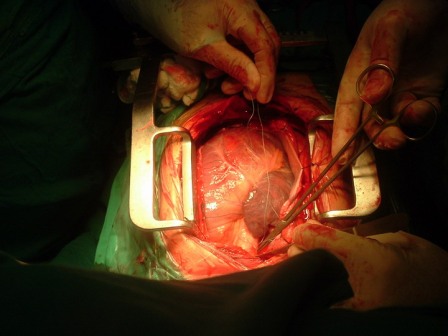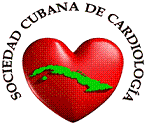Surgical treatment and Interventional catheterization of newborns and infants with native aortic coarctation
Keywords:
Coartación de la aorta, Recoartación, Cirugía, HemodinamiaAbstract
Introduction: Surgical relief of Coarctation of the aorta (CoA) and catheter interventional techniques are available alternatives even though no consensus has been reached in regard to the method of intervention (surgery vs. balloon angioplasty) in neonates and infants with native CoA. Many cardiologists prefer surgical intervention, whereas a few may choose for balloon angioplasty.
Objective: To analyze surgical and interventional techniques outcomes in neonates and infants with native CoA. To identify the complications and the intensive care unit (ICU) stays. To determine the risk factors related to recoarctation (ReCoA).
Method: An observational, analytical, longitudinal and prospective study was made aiming to analyze the surgical and balloon angioplasty outcomes in newborns and infants with native CoA at the William Soler Pediatric Cardiology Hospital from 2006 - 2011. Patients were distributed in two groups: Group I: patients treated with surgery (n=50); Group II: patients treated with angioplasty (n=14).
Results: 75.0 % of patients in Group I and 57.1 % of the Group II were less than the six months old. ICU stays of patients treated surgically were the largest (median of 36 hours). The percentage of ReCoA was higher in patients treated with angioplasty (28.5 %). Paradoxical arterial hypertension was the most common complication found (60.0 %). A residual gradient higher than 15 mm Hg following surgical correction or balloon angioplasty was identified as a risk factor for ReCoA (interventional catheterization RR: 7.5; surgery RR: 11.4).
Conclusions: ICU stays were longer in the patients underwent surgery. Patients treated with balloon angioplasty showed higher incidence of ReCoA. Complications were not so frequent. A gradient higher than 15 mm Hg was identified as a risk factor for ReCoA irrespective of the procedure performed.
Downloads

Published
How to Cite
Issue
Section
License
Aquellos autores/as que tengan publicaciones con esta revista, aceptan los términos siguientes:- Los autores/as conservarán sus derechos de autor y garantizarán a la revista el derecho de primera publicación de su obra, el cuál estará simultáneamente sujeto a la Attribution-NonCommercial 4.0 Internacional (CC BY-NC 4.0) que permite a terceros compartir la obra siempre que se indique su autor y su primera publicación esta revista. o admite fines comerciales. Permite copiar, distribuir e incluir el artículo en un trabajo colectivo (por ejemplo, una antología), siempre y cuando no exista una finalidad comercial, no se altere ni modifique el artículo y se cite apropiadamente el trabajo original. El Comité Editorial se reserva el derecho de introducir modificaciones de estilo y/o acotar los textos que lo precisen, comprometiéndose a respectar el contenido original.
- Los autores/as podrán adoptar otros acuerdos de licencia no exclusiva de distribución de la versión de la obra publicada (p. ej.: depositarla en un archivo telemático institucional o publicarla en un volumen monográfico) siempre que se indique la publicación inicial en esta revista.
- Se permite y recomienda a los autores/as difundir su obra a través de Internet (p. ej.: en archivos telemáticos institucionales o en su página web) antes y durante el proceso de envío, lo cual puede producir intercambios interesantes y aumentar las citas de la obra publicada. (Véase El efecto del acceso abierto).








